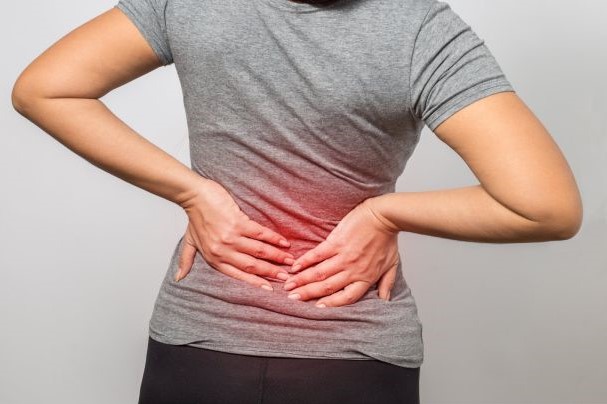
What is low back pain? An overview of low back pain
Low back pain or lumbago is a pain that mainly affects the lower back, but can radiate to the lower limbs, becoming lumbosciatica or sciatica
It is a more common condition than one might think and affects millions of people worldwide.
Low back pain can be caused by many factors including:
- Physical inactivity
- poor posture
- obesity
- muscle fatigue
- intervertebral disc suffering such as disc herniation
- stenosis (narrowing) of the spinal canal
- arthrosis and arthritis
- scoliosis.
Some factors can contribute to the occurrence of back pain and are:
- smoking
- stress
- insomnia
- anxiety.
These factors affect the paravertebral muscle tone causing great tension and greatly influencing the symptoms.
What are the risk factors for low back pain?
Risk factors for lumbago include:
- advanced age
- sedentariness
- obesity
- pregnancy
- certain work activities that require lifting weights or repetitive movements.
In addition, certain diseases such as rheumatoid arthritis or multiple sclerosis may increase the risk of developing lumbago.
What are the symptoms of lumbago pain?
The symptoms of lumbago can vary from person to person, but often manifest themselves as:
- pain or stiffness in the lumbar region, i.e. the lower back
- numbness, tingling or weakness in the legs
- difficulty moving or standing for prolonged periods
- pain that radiates to the legs.
In some cases, back pain can be so severe that it prevents the person from performing daily activities.
Back pain can be acute or chronic and can vary in intensity depending on the severity of the condition that caused it.
How is low back pain diagnosed?
The diagnosis of lumbago-lumbosciatica is made through an initial interview with the patient, exploring the patient’s lifestyle, type of work and medical history.
This is followed by a comprehensive clinical examination, which includes muscle strength assessment, neurological examination with the study of reflexes and sensitivity in the affected area.
In addition, imaging tests may be prescribed such as:
- x-rays
- magnetic resonance imaging
- computed tomography to identify abnormalities or damage to surrounding tissues
- electromyographic and neurographic tests of the lower limbs.
Can back pain be prevented?
There are several ways to prevent back pain, including
- maintaining good posture
- stretching regularly
- sitting or standing for prolonged periods.
Other methods of prevention include
- maintaining an ideal weight
- maintaining an active and healthy lifestyle
- avoiding stress
- quitting smoking
- using appropriate weight-lifting techniques when carrying heavy objects.
How to treat low back pain?
The treatment of low back pain depends on the cause of the condition.
In some cases, rest and taking anti-inflammatory painkillers can relieve back pain.
In addition to traditional treatments, there are several alternative therapies that can help relieve low back pain, including:
- acupuncture
- massage therapy
- yoga
- sleeping on a comfortable mattress
- replacing old or worn-out shoes – proper footbeds.
These therapies can be used alone or in combination with other treatments to help resolve low back pain.
In rare cases, back pain may require surgery or alternative surgical therapies.
Conclusions
Low back pain is a common condition that can be caused by various factors.
However, it is important to know that it is treatable with both traditional and alternative therapies and can often be prevented through healthy habits and lifestyle changes.
My advice, if you suffer from back pain, it is important to consult a specialised professional as soon as possible to determine the best therapy project for your individual needs.
Read Also
Emergency Live Even More…Live: Download The New Free App Of Your Newspaper For IOS And Android
Back Pain, What Are The Different Types
Back Pain: The Importance Of Postural Rehabilitation
Cervicalgia: Why Do We Have Neck Pain?
O.Therapy: What It Is, How It Works And For Which Diseases It Is Indicated
Oxygen-Ozone Therapy In The Treatment Of Fibromyalgia
Hyperbaric Oxygen In The Wound Healing Process
Oxygen-Ozone Therapy, A New Frontier In The Treatment Of Knee Arthrosis
Assessment Of Neck And Back Pain In The Patient
‘Gendered’ Back Pain: The Differences Between Men And Women
The Causes Of Acute Low Back Pain
What To Know About The Neck Trauma In Emergency? Basics, Signs And Treatments
Lumbar Puncture: What Is A LP?
General Or Local A.? Discover The Different Types
Intubation Under A.: How Does It Work?
How Does Loco-Regional Anaesthesia Work?
Are Anaesthesiologists Fundamental For Air Ambulance Medicine?
Epidural For Pain Relief After Surgery
Lumbar Puncture: What Is A Spinal Tap?
Lumbar Puncture (Spinal Tap): What It Consists Of, What It Is Used For
What Is Lumbar Stenosis And How To Treat It



